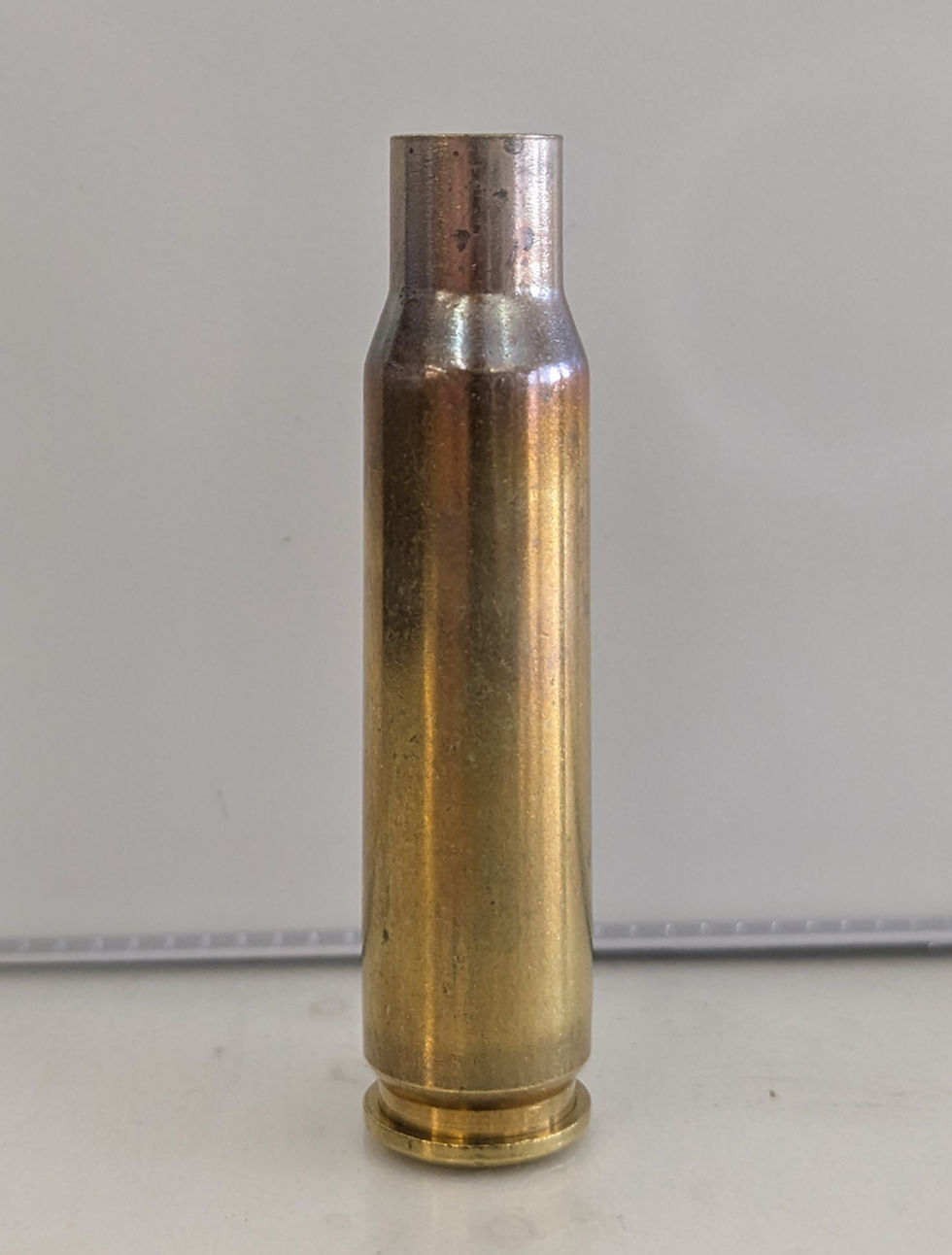Should You Weigh Your Brass Cases When Reloading?
- Red Leg Guns

- Sep 16
- 3 min read
Updated: Oct 22
Reloaders, hunters, and precision shooters are always chasing tighter groups and more consistent velocities. One hotly debated topic in the reloading world is this:
"Does weighing your brass cases actually make a difference?"
At Redleg Guns, we’re all about practical precision not internet hype. So we decided to put this question to the test with real-world data to help you decide if sorting your brass by weight is worth your time.

🔍 Why Reloaders Weigh Brass Cases and Sort
The theory goes like this:
Heavier brass = less internal volume
Less volume = higher pressure
More pressure = higher velocity
Based on ideal gas law principles, any change in internal case volume could lead to inconsistencies in pressure and velocity especially at long range.
So... should you sort all your brass by weight?
📊 The Real-World Test: Sorting Lapua .308 Brass by Weight
To find out, we took 500 pieces of once-fired Lapua .308 brass all from the same lot and sorted them by case weight. Everything else was held constant: primer, powder charge, bullet, seating depth, neck tension, and so on.
Then we fired multiple 5-shot strings through a precision bolt gun and captured chronograph data.
🔫 Results:
Standard Deviation (SD): 11.8 fps
Extreme Spread (ES): 62 fps
No consistent velocity trend based on brass weight
Weight range tested: ~160 grains to heavier cases
Ballistic Impact at 400 Yards: With a 150-grain bullet at an average muzzle velocity of 2856 fps, the velocity variation (ES of 62 fps) translates to a vertical dispersion of approximately 0.7 inches at 400 yards, assuming a ballistic coefficient of 0.45 (G1) and standard atmospheric conditions. This is negligible for most practical shooting scenarios.
🧠 The Takeaway:
Even though the brass varied slightly in weight, there was no measurable correlation between heavier/lighter brass and velocity. The internal volume remained consistent.
⚙️ Why Didn't Case Weight Matter?
Manufacturers like Lapua, Peterson, and Alpha Munitions use top-tier tooling and extremely tight tolerances. While the outer brass dimensions or thickness might shift slightly, the internal case volume stays highly consistent.
🔍 What About Mixed Headstamp Brass?
To explore the impact of mixed headstamp brass, we conducted a second test using 360 pieces of .308 brass from various manufacturers: 100 Hornady, 62 Federal, 87 PMC, and 111 Winchester cases. All cases were sized within 0.002" headspace to ensure consistency. The weight difference between the lightest and heaviest cases was 287 grains. We kept all other variables identical to the Lapua test: same rifle, bullet, powder, sizing, seating depth, etc.
🔫 Results:
Standard Deviation (SD): 36.8 fps
Extreme Spread (ES): 197 fps
Average Muzzle Velocity: 2878 fps
Ballistic Impact at 400 Yards: With a 150-grain bullet and an ES of 197 fps, the velocity variation results in a vertical dispersion of approximately 2.2 inches at 400 yards, assuming a ballistic coefficient of 0.45 (G1) and standard atmospheric conditions. This is enough to affect precision, especially for long-range shooting.
🧠 The Takeaway:
Unlike the Lapua brass, mixed headstamp brass showed a higher velocity spread, likely due to variations in internal case volume across manufacturers. This confirms that sorting by weight or volume could be beneficial when using mixed brass, particularly for precision shooting.
If you’ve ever pulled brass from a public range bin or bought bulk surplus, this will show how much those inconsistencies really matter.
✅ When Should You Bother Sorting Brass by Weight?
Brass Type | Should You Sort? |
Premium Brass (Lapua, Peterson) | ❌ Not worth it |
Bulk or Mixed Headstamp | ✅ Might help |
Shooting ELR (1000+ yds) | 🟡 Maybe – but sort by volume, not just weight |
🔧 What Matters More Than Brass Weight?
If you're reloading for hunting, competition, or custom rifle builds, here's where to focus your time instead:
Use high-quality brass
Trim and chamfer consistently
Maintain proper neck tension
Uniform primer pockets & flash holes
Match-grade powders and bullets
Check seating depth and powder charge regularly
Anneal when needed (especially for match loads)
🎯 Redleg’s Take on Reloading for Precision
At Redleg Guns, we reload with purpose not superstition. Our training and rifle builds are grounded in what works on target, not just online.
Whether you're dialing in your hunting load or prepping for an F-Class match, we're here to help you separate fact from fiction.
📥 Free Download: Redleg's Reloading Data Sheets
Take your reloading game to the next level with the exact data sheets we use on our bench.
📞 Ready to Shoot Straighter?
✅ Reloading Classes✅ Custom Rifle Builds✅ 1-on-1 Precision Training
📍 Visit us (by appointment)📞 (507) 677-6007📧 info@redlegguns.com🌐 www.redlegguns.com




Comments